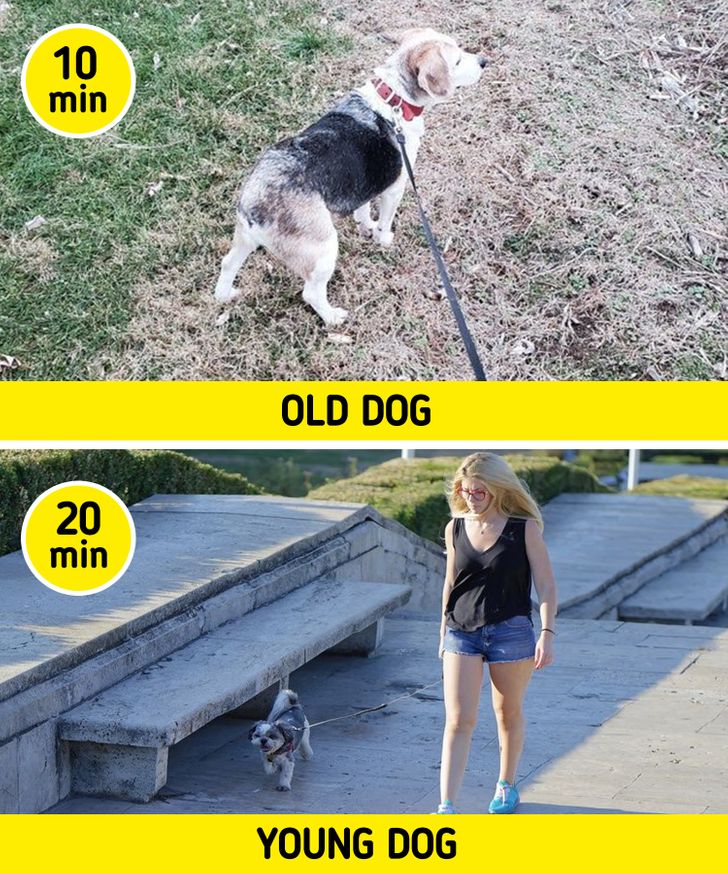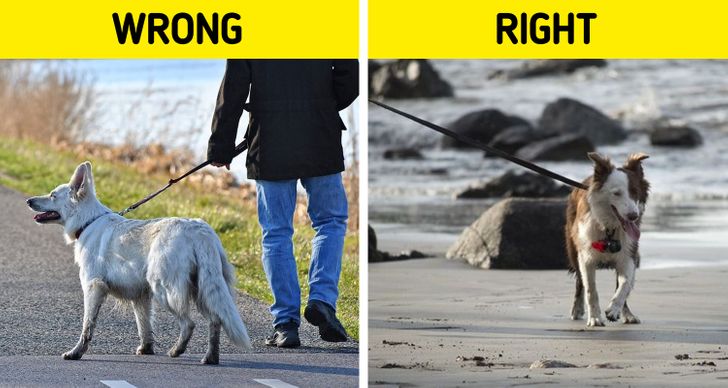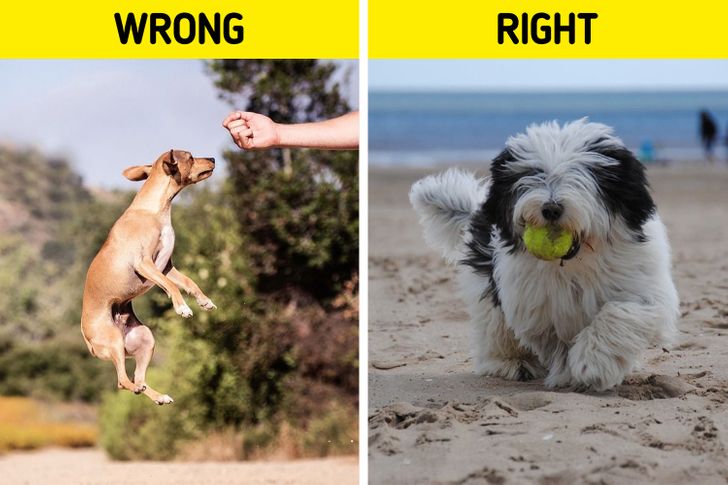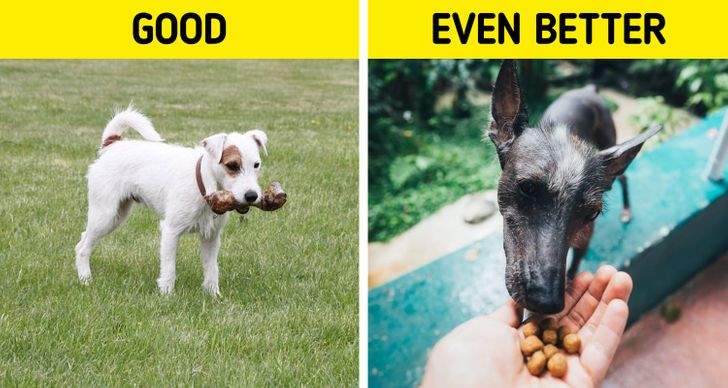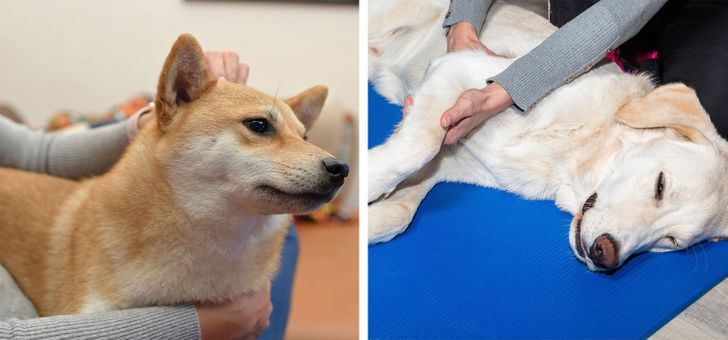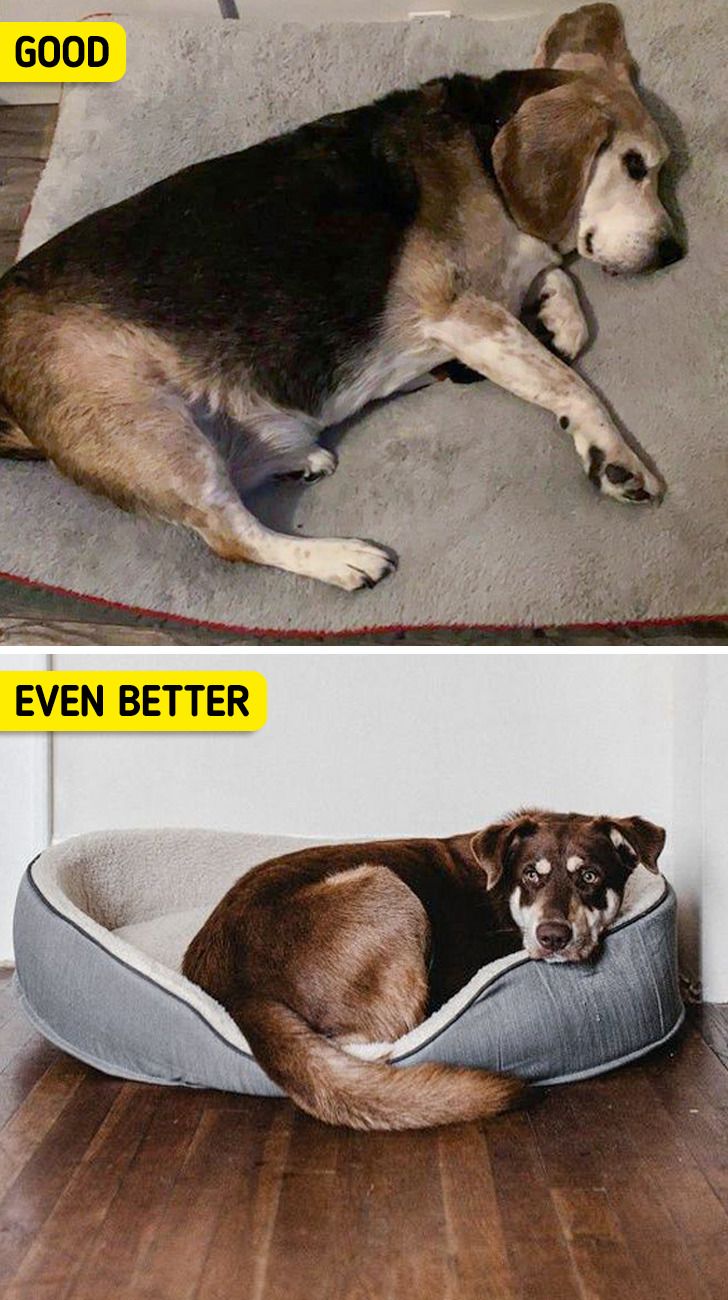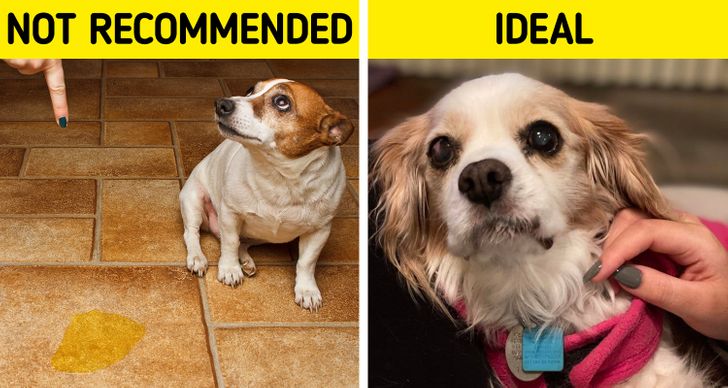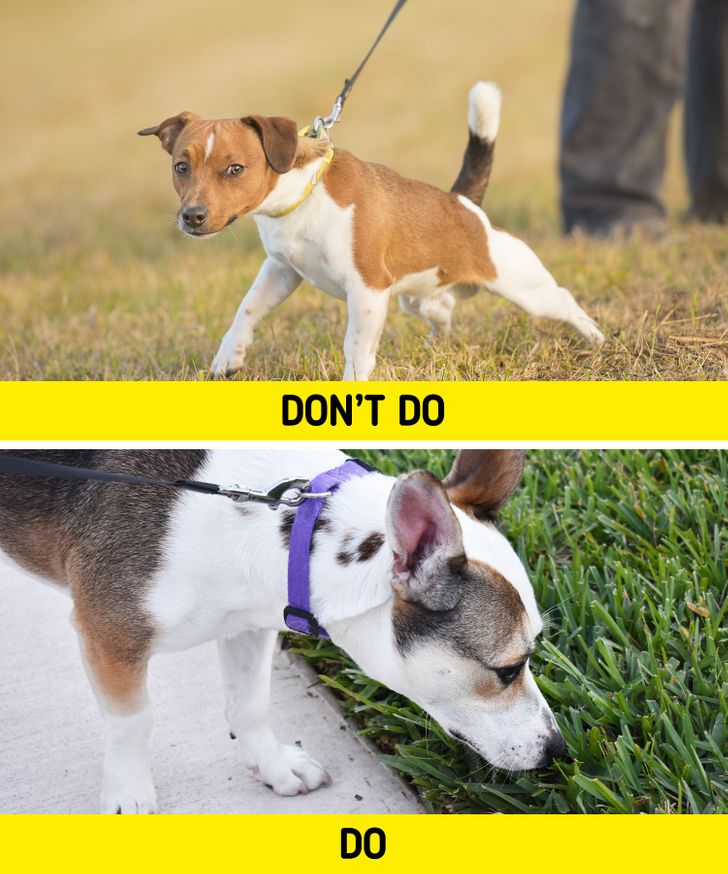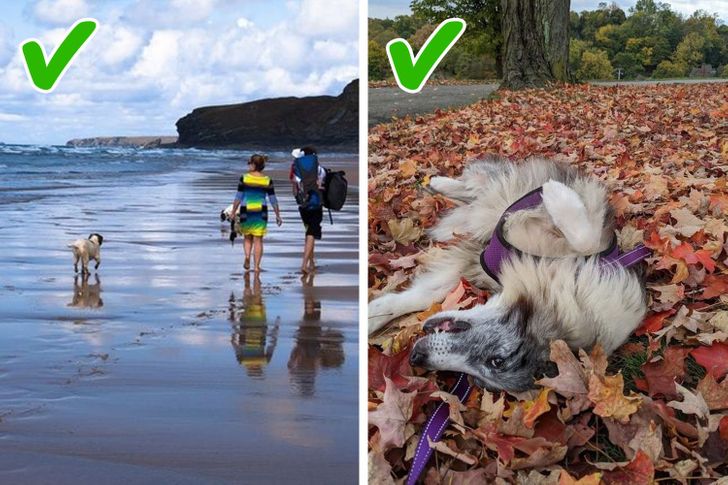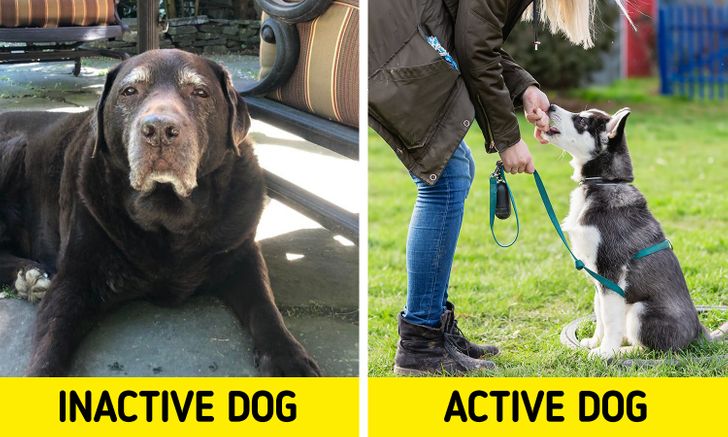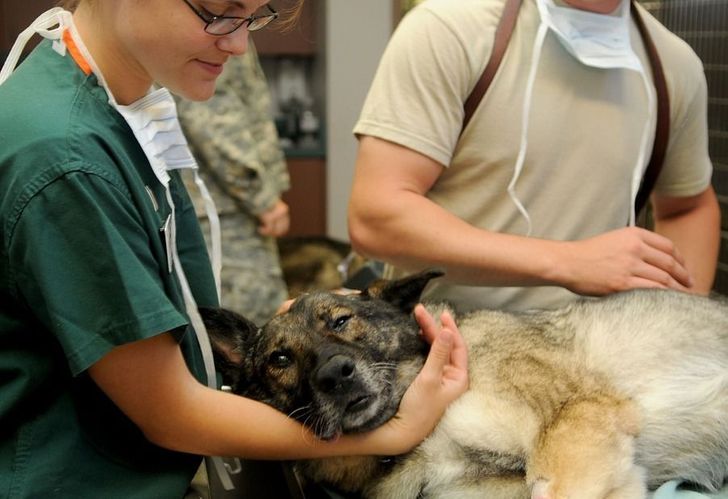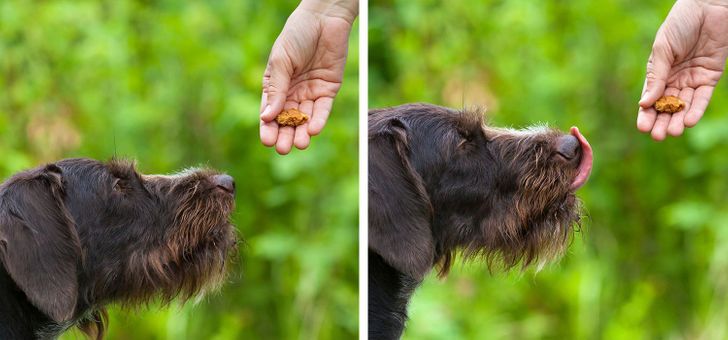sadly they get old so fast :(
14 Tips to Make a Senior Dog Feel More Comfortable
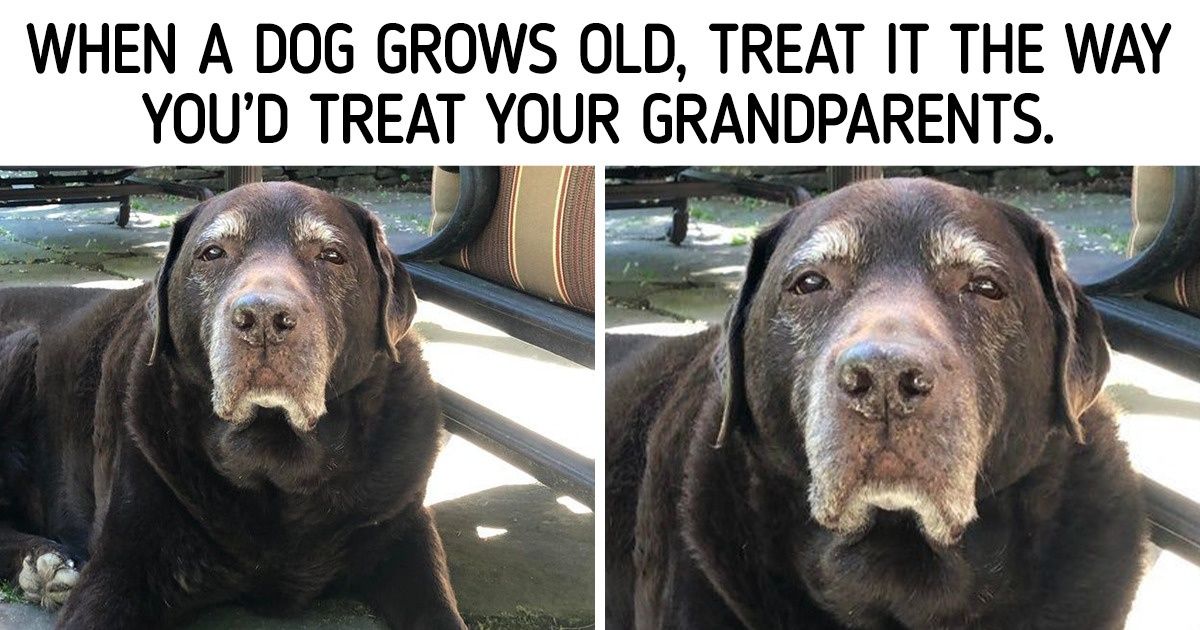
If you have a dog as a pet, you may notice that, as the years go by, your companion changes in terms of their physiology, the speed of their movements, their mood, and so on. That’s why it’s very important to provide them with certain care as they get older.
Bright Side wants to give you 14 recommendations to take into account when it comes to taking care of your dog when they’re no longer that playful puppy that you first adopted.
1. Take them on shorter walks.
Older dogs often develop certain conditions that limit them when exercising or going for walks, so they may slow down or need to take breaks a little more often. In any case, they shouldn’t stop going on walks. However, it’s best to keep the walks short and steady. For example, instead of going out for 30 minutes twice a day, they can take 3 walks of 10 or 15 minutes to avoid getting too tired.
2. Have them walk on easy ground.
Another aspect of dog care that you should consider when going for a walk with senior dogs is letting them walk on soft ground. While it’s hard if you live in the city, try to avoid asphalt as much as you can. Avoid making common mistakes when walking, such as taking your pet out when the weather is not pleasant, at times when the sun and temperature are strongest, or when it’s very cold.
3. Avoid jumps when playing with them.
To prevent joint damage, avoid letting your pet jump or make sudden movements when playing with them. Of course, that doesn’t mean you should stop playing with your elderly dog. On the contrary, when they get older, dogs need more pampering and affection.
Additionally, to delay your dog’s cognitive decline, stimulate their mind through games that make them think. You can do this with things you have at home, for example: taking objects out of a box, hiding items under a towel for them to find or building a maze of chairs covered with a bedsheet for them to pass through. Just make sure not to make the game too hard, or your pet could become frustrated and upset.
4. Pay attention to their diet.
Like humans, when they reach a certain age, dogs need a special diet that meets all their needs in terms of quantity and quality. It’s essential to add vitamins and supplements to their meals to prevent different diseases, especially those related to the joints, as arthritis is a common problem. You must also make sure you give them the right amount of food to prevent weight gain or loss.
5. Massage them.
Gentle pressure massages can help your senior dog relax, relieving possible pain or contractures. These massages will help them rest and sleep better. Massaging them will also strengthen your bond with them, and help them improve their flexibility and their circulatory system.
6. Get them a good quality bed.
After a certain age, your pet’s bones may start to hurt when they lie on the floor. Getting them a proper dog bed is a good idea. That way, they will be able to lie comfortably on it and won’t end up having sore muscles and bones. You could also consider adding more beds for your companion in different parts of your house, so they can feel comfortable and relaxed in other environments.
7. Be more patient with them.
8. Encourage them to use their sense of smell as a guide.
Some of the signs that dogs are getting older are the gradual loss of certain abilities, and cognitive and sensory impairment. But smell is the only sense that dogs won’t lose as they grow old. That’s why it’s so important to stimulate and encourage them to use it through games. For example, you can teach your dog to trust their nose to guide them. Try, for instance, hiding their favorite treat somewhere where they can use their nose to sniff and search for it. Just remember it shouldn’t be too hard for them to find, or they will become frustrated.
9. Take different walks.
It is true that older pets’ walks should be shorter. However, it’s also important that they do different activities, such as going out to places that are new and stimulating to them. If you can, take your pet by car to a different place for a walk, preferably outdoors, so that they can continue to stimulate their senses through new findings. If you can’t go too far for whatever reason, we suggest moving some objects around the house to create a different environment.
10. Teach them new skills.
If your puppy was always very active, it’s a good idea to keep on teaching them new tricks or skills even as they grow older. Just keep in mind that it may take them a little longer to get there and learn new tricks. Also, make sure that the exercise difficulty isn’t too much for them. Doing this will help keep their mind active.
11. Establish a daily routine.
This routine should consist of a time for walks, meals, and breaks, always at the same time. For example, if your dog suffers from Cognitive Dysfunction Syndrome (the Doggie Alzheimer’s Syndrome), establishing a proper routine will help them know in advance what the day will look like, which in turn will give them a sense of security, making them feel happier and safe.
12. Take them to the vet more often.
Routine check-ups, approximately every six months, are important so that the veterinarian can detect any problem as soon as possible and find the best solution. This way, you can avoid unnecessary discomfort to your pet or even painful treatments for possible health problems not diagnosed in time. When it comes to health, prevention is always the way to go.
13. Reward them more often.
An elderly dog still feels happy every time they do something right, and you reward him. That’s why it’s crucial to continue making them feel as part of your family, so they don’t feel displaced now that they’re a bit older. You can give them specific treats for senior dogs, always taking into account their physical condition and weight.
14. Take them for a swim.
Swimming is a relaxing form of exercise that strengthens your dog’s muscles without impacting their joints. For that reason, it’s a good idea to take your dog to a special swimming pool or somewhere where they can enjoy splashing in the water. However, avoid places with a strong current to help them stay afloat and in one place with little effort. At the end of the bath, remember to dry them well to prevent hypothermia.
Do you have an older dog at home? What other special cares do you provide for them?
Comments
same with cats though, they require tons of extra attention as they get old
Related Reads
I Refuse to Keep Paying for “Family Trips” I Never Get to Go On

I Refused a Work Trip Without Babysitter Pay—Now HR Is Involved

15+ Raw Stories About Jealousy That Can Leave You Speechless

I Refused to Stay After My Husband Secretly Spoiled His Daughter—Then I Heard the Truth

10 Honest Stories That Capture the Struggles and Pain of Blended Families

I Excluded My Wife From My Kids’ Core Memories—She’s Too Busy Working

15+ Times an Unexpected Guest Turned an Ordinary Day Into a Scene Straight Out of a Movie

20 Tutors Reveal What Really Goes On Behind Closed Doors

My Coworker Reports Everyone to HR to Get Bonuses—So I Turned the Tables

11 People Who Remind Us Kindness Takes a Moment, but Echoes Forever

15 People Who Didn’t Want a Cat but Were Chosen by Fate Anyway

I Refused to Work on My Vacation, Even Though “Millions Were at Stake”

